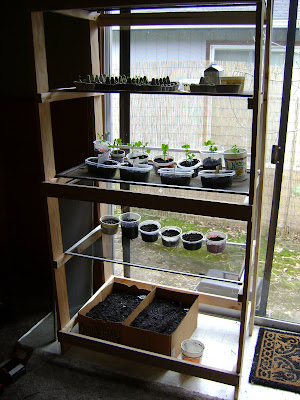As I was working in the orchard which is located on a hill just below our resident bees, I noticed some increased insect activity. Busy as a bee, was brought to a new level. The bees were active and flying about in large numbers and their was an audible buzz from 20 feet away. So just after lunch we came out to the orchard to find a great big ball of bees hanging out from the bottom of a lemon tree. This was a swarm.
Bees swarm when they have grown to big for their hive. When the hive recognizes the lack of real estate in the area, a new queen will be born. A series of scouts are sent out to check out new possibilities for a home. When they return, they do the bee dance, which is their version of a reconnaissance briefing. The queen then comes out of the hive and is surrounded by all the workers creating a giant ball of bees. It is interesting to note that the bees also gorge on honey for this event and are so full that they are unable to sting.

The trick for the beekeeper is to get the big ball of bees into a new bee hive that you have prepared. So upon noticing the swarm, us aspiring beekeepers went and found Penny Livingston-Stark, permaculture superstar and veteran beekeeper. Penny guided us through the rest of the process and did some of the more intense work.
They are are a series of bee boxes already on the property. They are standard manufactured hives. A hive box is kind of like a filing cabinet. There is the bigger box that is filled with slat frames that the bees construct their homes in. The slats are similar to a folder that would hang in the filing cabinet. The bees build their honey combs in the frames that hang vertically in the box. So we had a new box, with 8 frames in it, with two blank pieces to take up the extra room on the sides. It is important to have only the allotted amount of space between the slats (enough for a bee to pass freely) and not more, because the bees will build their comb outside of the slats and then its all a big mess.
So we made sure the slats were all clean and we put in some wax honey comb starters, so the bees would have a guide. We also took a blow torch and lightly brushed the flame throughout the box to kill any germs.
In order to catch the swarm, we had to remove a few slats from the box so that the big ball of bees would have space to get in. We donned our stylish bee suits and went up the hill to the lemon tree and the bees. Conveniently the swarm was close to the ground. We positioned the new hive box underneath the swarming ball. Then Penny, bravely, shook the branch and the bees fell in to the hive box. The important thing is to make sure the queen gets in, because everybody else just follows her. Apparently she made it in, because the bees stayed there. Penny slowly replaced the rest of the slats and covered the hive. Then we left it alone. Later that evening, Penny returned and duck taped all the openings to the hive and moved the box to its spot next to the other hives in the orchard. More bees, more honey.

Penny also showed us how to harvest honey from another hive. Using a smoker is essential, because unlike when they are swarming, they can still sting. It calms the bees down and they don't mind as much when you take a whole slat out of the hive. Penny brushed off the bees and then we brought the honey comb inside. Fresh honey from the hive is amazing. Sustainable hedonism at its finest. Its a simple process of putting the honey comb in a strainer to allow the honey to separate from the wax.

So that was my first experience with beekeeping. Perhaps by the end of the summer, I will be harvesting honey and catching swarms on my own.


































